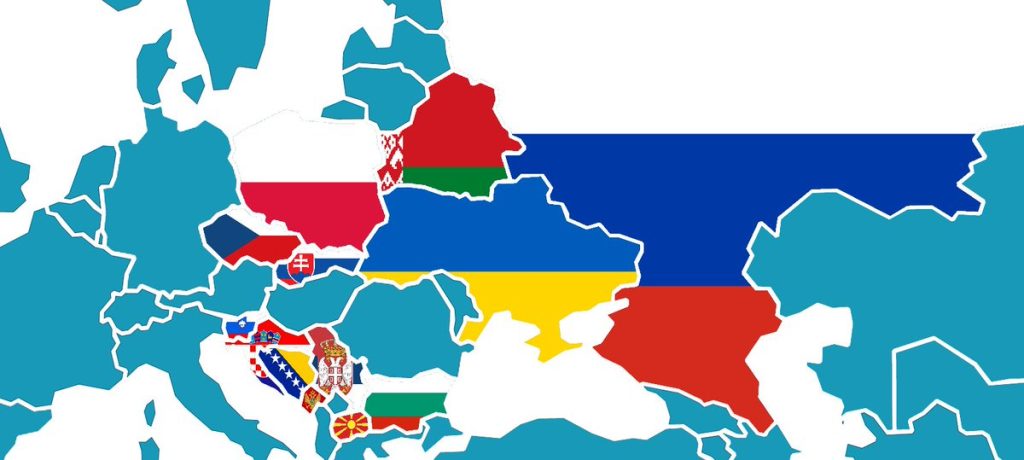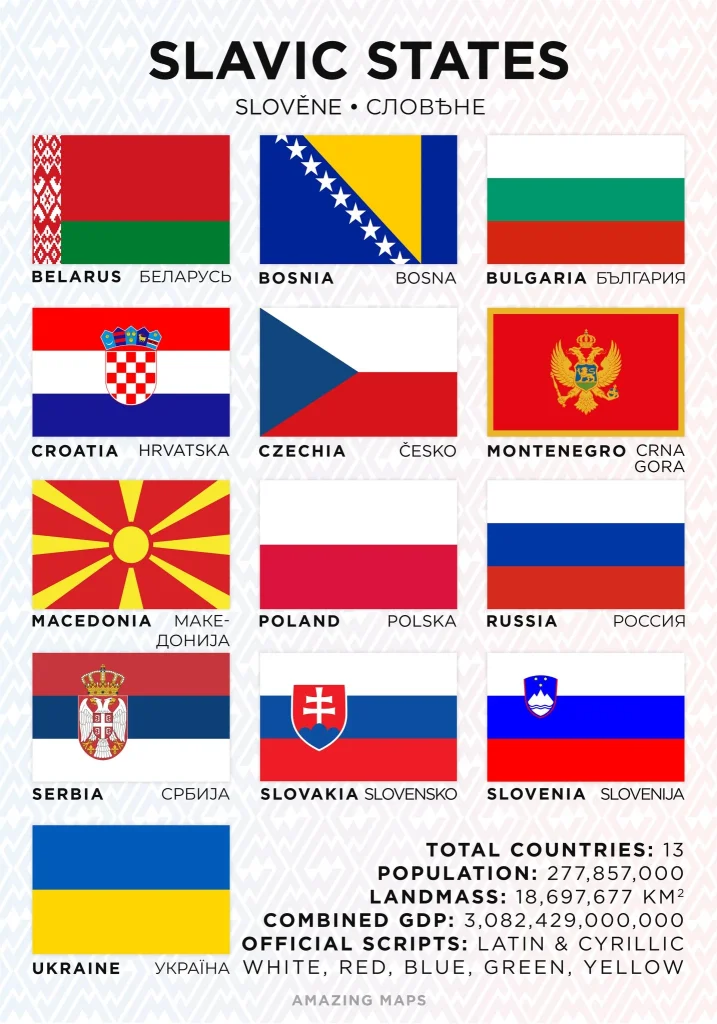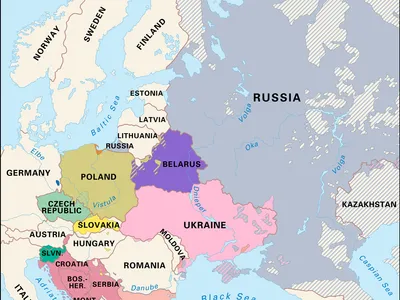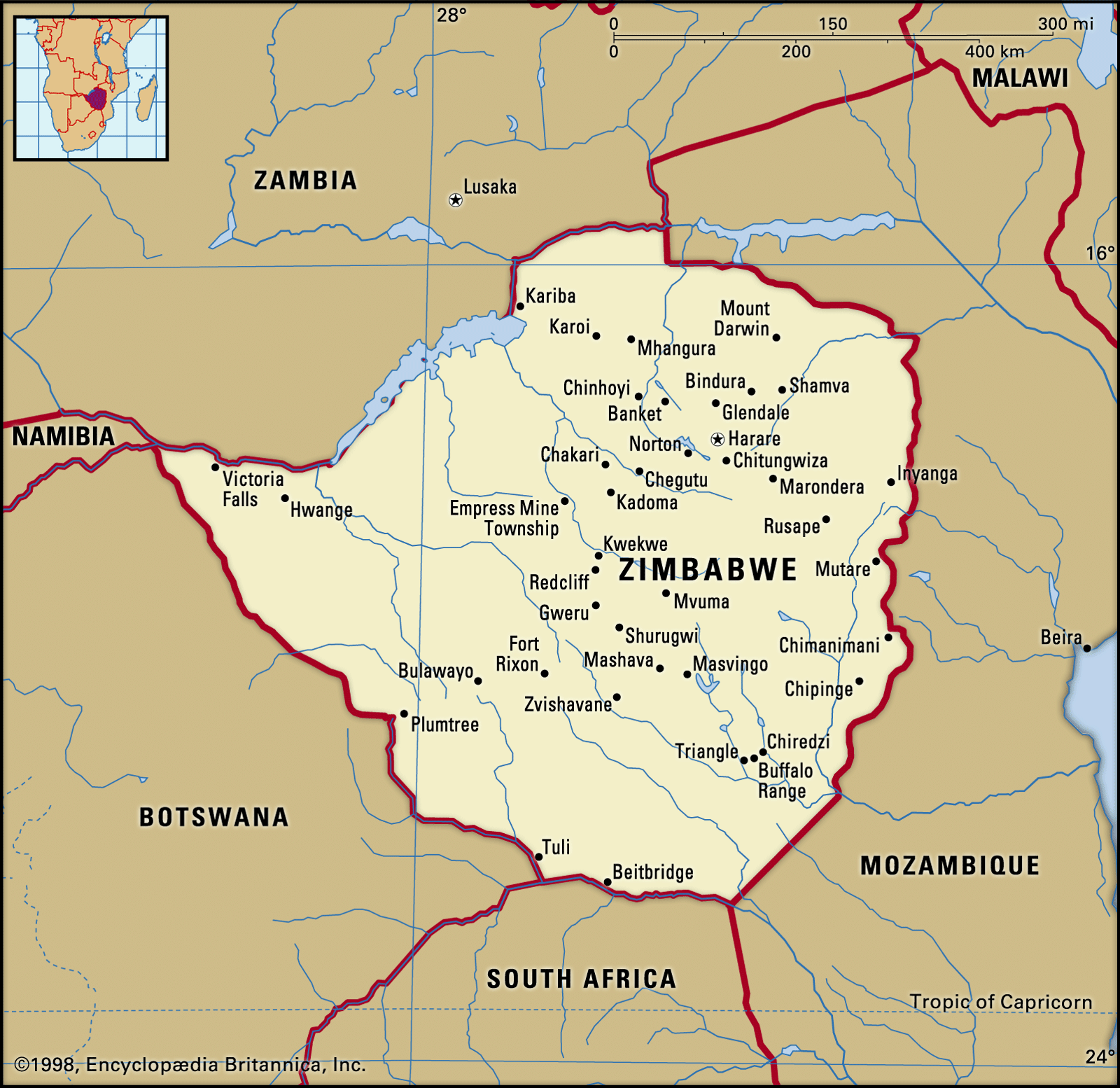The Slavic countries are a fascinating group of nations in Eastern, Central, and Southeastern Europe, bound together by their languages, traditions, and shared history. They form one of the most influential cultural and linguistic families in the world, with over 360 million people.
Why are they called Slavic countries?
When we say Slavic countries, we mean the 13 nations (Russia, Poland, the Czech Republic, Serbia, etc.). These countries are historically inhabited by Slavic peoples and still carry their cultural and linguistic heritage. The term “Slavic countries” comes from the Slavs, an ethno-linguistic group in Europe.
The word “Slav” itself is believed to come from the old word slovo (meaning “word” or “speech”) — implying “those who speak (the same language).”
- Slavic countries are those nations where Slavic languages (Russian, Polish, Czech, Bulgarian, etc.) are spoken as the native tongue.
- These countries share common roots in history, culture, and traditions, even though today they are politically and economically diverse.
All slavic countries
We often have a question how many slavic countries are there? Here’s a complete list of all Slavic countries (grouped into East, West, and South Slavs)

All Slavic countries list
Slavic countries are nations where Slavic languages are spoken, belonging to the Indo-European family. The Slavic people are divided into three main groups:
- East Slavic Countries → Russia, Ukraine, Belarus
- West Slavic Countries→ Poland, Czech Republic, Slovakia
- South Slavic Countries→ Slovenia, Croatia, Bosnia & Herzegovina, Serbia, Montenegro, North Macedonia, Bulgaria
Together, there are 13 Slavic countries, The are covering vast regions of Europe and parts of Asia.
Fun facts:
- The largest Slavic country is Russia (spanning Europe & Asia).
- The smallest Slavic country is Montenegro.
- Poland is the largest West Slavic nation, while Bulgaria is the oldest Slavic country by continuous statehood.
Slavic countries and their flags

The flags of Slavic countries symbolize the rich history, culture, and unity of the Slavic people. Most Slavic flags prominently feature the colors red, blue, and white, known as the Pan-Slavic colors, which were adopted during the 19th-century Slavic Congress in Prague. These colors represent freedom, unity, and shared heritage among nations such as Russia, Serbia, Slovakia, Croatia, and Slovenia.
While some Slavic countries like Poland, Ukraine, and Bulgaria have unique variations, their flags still reflect strong cultural identity and national pride. Understanding the flags of Slavic nations not only highlights their distinct traditions but also strengthens their recognition in European and world history.
Slavic languages
The Slavic languages form a major branch of the Indo-European family, spoken by over 315 million people worldwide. They are divided into three main groups. Despite their differences, these languages share similar grammar, vocabulary, and cultural roots. Russian is the most widely spoken Slavic language, while Polish and Serbo-Croatian also have large speaker bases. The diversity of Slavic languages reflects the deep history and unity of the Slavic countries across Eastern and Central Europe.
| Language Group | Languages | Countries Spoken |
|---|---|---|
| East Slavic | Russian | Russia, Belarus, Ukraine, former USSR states |
| Ukrainian | Ukraine, Russia, Poland, Canada | |
| Belarusian | Belarus, Poland, Lithuania | |
| West Slavic | Polish | Poland, Germany, UK, USA, Canada |
| Czech | Czech Republic, Slovakia, Austria | |
| Slovak | Slovakia, Czech Republic, Hungary | |
| South Slavic | Serbian | Serbia, Bosnia & Herzegovina, Montenegro |
| Croatian | Croatia, Bosnia & Herzegovina | |
| Bosnian | Bosnia & Herzegovina | |
| Montenegrin | Montenegro | |
| Bulgarian | Bulgaria, Moldova, Turkey | |
| Macedonian | North Macedonia, Albania | |
| Slovene | Slovenia, Austria, Italy |
Slavic Culture & Traditions
- Folklore & Myths: Ancient forest spirits, gods, and legends.
- Festivals: Maslenitsa (Russia), Wianki (Poland), Kukeri (Bulgaria).
- Cuisine: Pierogi (Poland), Borscht (Ukraine), Banitsa (Bulgaria), Cevapi (Balkans).
- Music & Dance: Circle dances, folk songs, and traditional instruments.
Top 20 Amazing Facts About Slavic Countries
- Russia is not only the largest Slavic country but also the biggest country in the world, spanning Europe and Asia.
- Montenegro 🇲🇪 is the smallest Slavic nation, with just over 600,000 people.
- Bulgaria, founded in 681 AD, is the oldest Slavic country that has kept its original name.
- Poland 🇵🇱 is the most populous Slavic country in the European Union, with over 37 million people.
- Russian is spoken by 258+ million people worldwide, making it the most widely spoken Slavic language.
- The flags of many Slavic countries feature red, blue, and white, chosen at the Prague Slavic Congress in 1848 as a symbol of unity.
- Figures like Baba Yaga, the mystical witch of the forest, appear in folk stories across multiple Slavic nations.
- Slavic countries boast dozens of UNESCO sites, including Dubrovnik (Croatia), Kraków (Poland), and Prague (Czech Republic).
- Religion: Eastern Slavs → Orthodox Christianity, Western Slavs → Roman Catholicism, Southern Slavs → Orthodox, Catholic, and Islam (especially Bosnia & Herzegovina).
- Circle dances like Kolo (Serbia) and lively folk music remain an essential part of Slavic traditions.
- Slavic countries gave the world Leo Tolstoy (Russia), Franz Kafka (Czech Republic), and Marie Curie (Poland).
- From pierogi in Poland to borscht in Ukraine and banitsa in Bulgaria, Slavic cuisine is hearty and full of flavor.
- Some countries use Cyrillic (Russia, Bulgaria, Serbia), while others use Latin (Poland, Czech Republic, Croatia).
- Prague, Moscow, Kraków, Belgrade, and Dubrovnik are some of the most visited cities in the Slavic world.
- Despite language and religion differences, Slavic identity is built on shared traditions and historic struggles.
- Before Christianity, Slavs worshiped gods like Perun (god of thunder) and Veles (god of the underworld).
- Slavic countries are home to world-class athletes, scientists, and artists—like Nikola Tesla (Serbia) and Robert Lewandowski (Poland).
- Slavic countries are home to around 360 million people.
- Slavic countries stretch from Central Europe (Poland, Czech Republic) down to the Balkans (Serbia, Bulgaria) and across to Russia in Eurasia.
- Croatia’s Adriatic coast, Slovenia’s lakes, and Poland’s medieval towns are increasingly popular among international travelers.
The Slavic countries are a unique blend of ancient traditions and modern progress. From breathtaking landscapes to diverse cuisines and cultural richness, the Slavic world is a treasure waiting to be explored.
Frequently Asked Questions on Slavic Countries
There are 13 Slavic countries: Russia, Ukraine, Belarus, Poland, Czech Republic, Slovakia, Slovenia, Croatia, Bosnia & Herzegovina, Serbia, Montenegro, North Macedonia, and Bulgaria.
Slavic countries speak Slavic languages, divided into East Slavic (Russian, Ukrainian, Belarusian), West Slavic (Polish, Czech, Slovak), and South Slavic (Serbian, Croatian, Bulgarian, etc.).
Russia is the largest Slavic country, covering both Europe and Asia, and is home to over 145 million people.
Yes, many Slavic countries like Poland, Czech Republic, and Slovenia are very safe for tourists, offering rich cultural experiences and historical landmarks.
Slavic culture is famous for its folk traditions, music, dance, mythology, and hearty cuisine such as pierogi, borscht, and cevapi.


